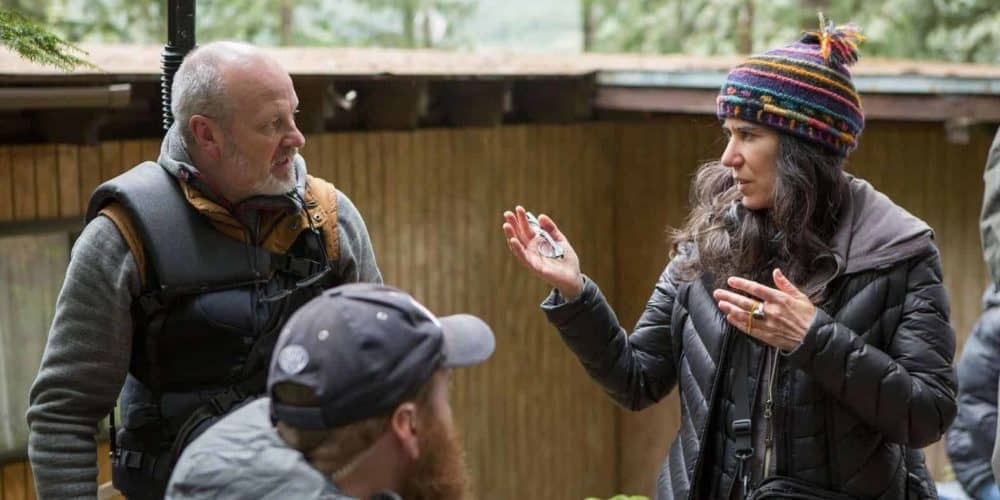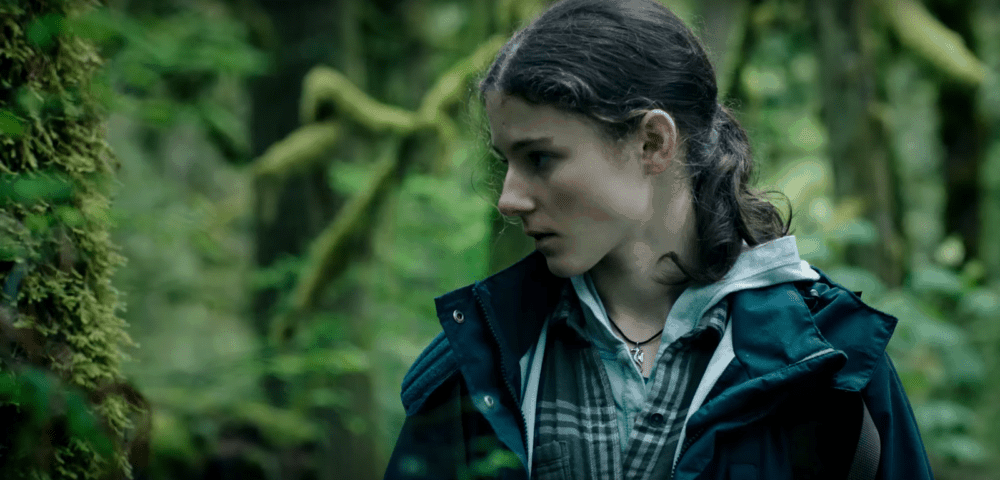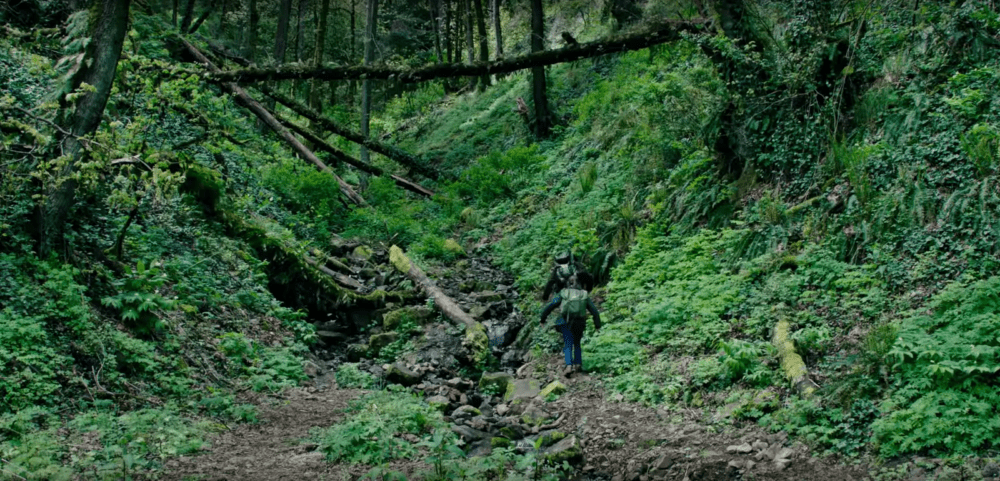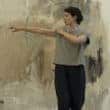Cinematographer Michael McDonough discusses collaborating with Debra Granik and the actors on Leave No Trace, choosing lenses, reflecting how the characters feel about their environment, and applying his TV experience. This is the second article in our Special Issue on Leave No Trace, which is now available as an ebook.

In all of her films to date, Debra Granik has consistently focused on people living in the margins. Down to the Bone (2004) and Winter’s Bone (2010) both centre on characters suffering from a drug addiction that is both the effect of and contributing to their state of near poverty. These characters survive more than they live, and in Leave No Trace, Granik pushes this aspect to symbolic extremes. Ben Foster plays Will, a veteran suffering from PTSD who has cut himself off from civilisation and now lives in a state of survival that he finds preferable to life in society, because only he can control it. In one way or another, and to various degrees, these characters are outsiders. Granik’s interest in them, however, isn’t based in a morbid, superior or patronising fascination, but in a deep desire to understand. Such profound empathy feels so natural within her films that this radical aesthetic of care can be difficult to even perceive on first viewing — Granik doesn’t call attention to her own righteousness; what she cares about are her characters.
Michael McDonough has been the Director of Photography (DOP) on all of Granik’s films to date. His cinematography across all three films presents her characters as three-dimensional human beings, as opposed to caricatures, curiosities, or cardboard stand-ins for ideas. In Leave No Trace, McDonough’s work is instrumental in making truly touching and understandable Will’s plight and his desires, as unusual as those might be. Even more impressive is the way McDonough’s images also — and simultaneously — respect the emotions and longings of Tom (Thomasin McKenzie), Will’s daughter, who does not necessarily agree with her father. The two of them often react to the same situation in diametrically opposing ways, yet we find ourselves able to understand and sympathise with both of them.
McDonough told me about working with colour grading and various lenses to make visible the characters’ feelings for the forest and for the city, learning to shoot fast while working on TV shows such as Fear the Walking Dead and Bosch, using a drone in the film, and collaborating with the lead actors on set.
Seventh Row (7R): You’ve worked with Debra Granik before, but how did you get involved in Leave No Trace?
Michael McDonough: Debra and I went to film school together, and I’ve worked with her on all her previous films. She’d been developing the script for at least five years with some co-producers. Over those years, I would get versions of the script to read and give my thoughts on. The first half of the script is pretty much based on the known facts about the characters. From the point where they go to the horse farm and then leave, no one knows what happened to this family. They never got in touch with anyone. It’s a mystery. When the second half of the script was in development, the question was “what happened to them?” It’d been like that for years and went through several variations, until it was finally settled that the current version was the story we wanted to tell.

When it got closer to filming, Debra had been traveling from New York up to Portland, Oregon, which was where it was originally set, and looking at locations over the course of maybe a year. It was supposed to film in the fall of 2016. For various reasons, it didn’t happen then. Thankfully, when it pushed to the spring of 2017, I was free and able to go and work on it. So we started. It meant that there was quite a short prep for me, only a few weeks, but because we’d worked together and known each other for so long, we could get into the process of making the film quite quickly.
7R: The forest is neither demonised nor idealised in the film — it doesn’t look like a Disney enchanted forest — and the same goes for the city. Was that always part of your approach? How did you manage to show the forest as a place where of course, there is less comfort than in a house in the city, but where people can still be happy?
Michael McDonough: The approach to filming the forest grew out of wanting to respect the characters’ feelings for the forest. The first part of the film sets up the tone that these are two people who are very comfortable and happy in this place that gives them everything they need. The approach was to cinematically present the feeling of the characters being in a place of comfort and happiness within the woods. I tried to make the woods welcoming, feel like a home. That was set. The photography would adjust for the second half of the story, when they went on their journey.

When we were in the forest, we tended to be close to the characters, living close to them within their circle. The camera was handheld; there were wider lenses; and we stood closer to them. And those lenses were lighter lenses: it was soft and warm. They gave out that feeling of comfort.
When we went to the city, the camera was physically farther away from the characters. That way, you feel separated from them just as they’re separated from their comfort and usual surroundings. We went for longer lenses, vantage lenses, zoom lenses, to make it feel less comfortable, to make it feel colder and greyer. We made the audience feel that they’re separated from their home by physically putting space in between the characters.
[click_to_tweet tweet=”‘The approach to filming the forest grew out of wanting to respect the characters’ feelings for the forest.’ – Michael McDonough” quote=”‘The approach to filming the forest grew out of wanting to respect the characters’ feelings for the forest.'”]
That continues a little when they escape and return to the forest, because they’re kind of lost. There’s still a sense of separation and danger. It’s only when Will starts to recover from his injury, and when Tom starts to feel like she’s found a home amongst other people, that we starts to get in closer again and introduce that warmth and comfort back into the film.
Want to read the rest of the article?
Get the Leave No Trace ebook
Relive the highs and lows of Debra Granik’s remarkable coming-of-age story and discover how the filmmakers brought it to life.

